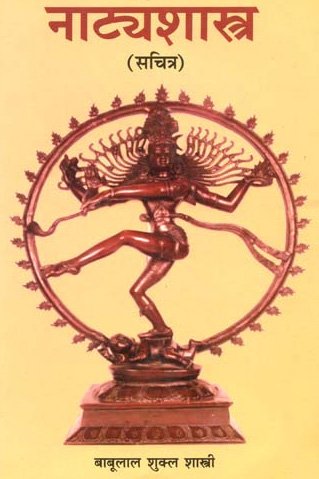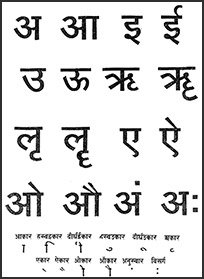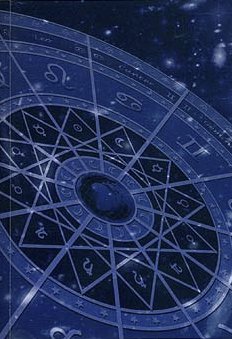Nipata, Nipāta: 26 definitions
Introduction:
Nipata means something in Hinduism, Sanskrit, Jainism, Prakrit, Buddhism, Pali, Marathi, Hindi. If you want to know the exact meaning, history, etymology or English translation of this term then check out the descriptions on this page. Add your comment or reference to a book if you want to contribute to this summary article.
In Hinduism
Purana and Itihasa (epic history)
Source: Cologne Digital Sanskrit Dictionaries: The Purana IndexNipāta (निपात).—Words that do not derive from roots like ara (quick).*
- * Vāyu-purāṇa 7. 57.

The Purana (पुराण, purāṇas) refers to Sanskrit literature preserving ancient India’s vast cultural history, including historical legends, religious ceremonies, various arts and sciences. The eighteen mahapuranas total over 400,000 shlokas (metrical couplets) and date to at least several centuries BCE.
Natyashastra (theatrics and dramaturgy)
Source: Wisdom Library: Nāṭya-śāstraNipāta (निपात) refers to “particles” (in Sanskrit grammar) and forms part of the “verbal representation” (vācika), according to the Nāṭyaśāstra chapter 15. Vācika itself represents one of the four categories of representation (abhinaya).
Source: archive.org: Natya ShastraNipāta (निपात, “particles”).—As they nipatanti (“come together”) with ‘declined words’ (pada) to strengthen their basic meaning, root, metre or etymology, they are called nipāta (“particles”).

Natyashastra (नाट्यशास्त्र, nāṭyaśāstra) refers to both the ancient Indian tradition (shastra) of performing arts, (natya—theatrics, drama, dance, music), as well as the name of a Sanskrit work dealing with these subjects. It also teaches the rules for composing Dramatic plays (nataka), construction and performance of Theater, and Poetic works (kavya).
Vyakarana (Sanskrit grammar)
Source: Shodhganga: Vaiyākaraṇabhūṣaṇasāra: a critical studyNipāta (निपात).—Particle which possesses no gender and number, and after which the case-ending is elided.
Source: Wikisource: A dictionary of Sanskrit grammarNipāta (निपात).—A particle which possesses no gender and number, and the case termination after which is dropped or elided. Nipata is given as one of the four categories of words viz नामन्, आख्यात, उपसर्ग (nāman, ākhyāta, upasarga) and निपात (nipāta) by all the ancient writers of Pratisakhya, Vyakarana and Nirukta works;cf. Nir. I. 4, M.Bh. on I. 1. Ahnika l, R. Pr. XII. 8 etc. The word is derived from the root पत् (pat) with नि (ni) by Yaska who has mentioned three subdivisions of Niptas उपमार्थे, कर्मोपसंग्रहार्थे (upamārthe, karmopasaṃgrahārthe) and पदपूरणे (padapūraṇe); cf. अथ निपाताः । उच्चावचेष्वर्थेषु निपतन्ति । अप्युपमार्थे । अपि कर्मोपसंग्रह्यार्थे । अपि पदपूरणाः । (atha nipātāḥ | uccāvaceṣvartheṣu nipatanti | apyupamārthe | api karmopasaṃgrahyārthe | api padapūraṇāḥ |) Nir. I. 4. The Nipatas are looked upon as possessed of no sense; cf. निपातः पादपूरणः (nipātaḥ pādapūraṇaḥ) R. Pr. XII. 8, V. Pr. VIII. 50, (com. by Uvvata). Panini has not given any definition of the word निपात (nipāta), but he has enumerated them as forming a class with च (ca) at their head in the rule चादयोऽसत्वे (cādayo'satve) where the word असत्वे (asatve) conveys an impression that they possess no sense, the sense being of two kinds सत्त्व (sattva) and भाव (bhāva), and the Nipatas not possesssing any one of the two. The impression is made rather firm by the statement of the Varttikakra-'निपातस्यानर्थकस्य प्राति-पदिकत्वम् (nipātasyānarthakasya prāti-padikatvam)' P. I. 2. 45 Vart. 12. Thus, the question whether the Nipatas possess any sense by themselves or not, becomes a difficult one to be answered. Although the Rkpratisakhya in XII.8 lays down that the Nipatas are expletive, still in the next verse it says that some of them do possess sense; cf. निपाता-नामर्थवशान्निपातनादनर्थकानामितरे च सार्थकाः (nipātā-nāmarthavaśānnipātanādanarthakānāmitare ca sārthakāḥ) on which Uvvata remarks केचन निपाताः सार्थकाः, केचन निरर्थकाः । (kecana nipātāḥ sārthakāḥ, kecana nirarthakāḥ |) The remark of Uvvata appears to be a sound one as based on actual observation, and the conflicting views have to be reconciled. This is done by Bhartrhari who lays down that Nipatas never directly convey the sense but they indicate the sense. Regarding the sense indicated by the Nipatas, it is said that the sense is never Sattva or Dravya or substance as remarked by Panini; it is a certain kind of relation and that too, is not directly expressed by them but it is indicated. Bhoja in his Srngaraprakasa gives a very comprehensive definition of Nipata as:-जात्यादिप्रवृत्तिनिमित्तानुपग्राहित्वेनासत्त्वभूता-र्थाभिधायिनः अलिङ्गसंख्याशक्तय उच्चावचेष्वर्थेषु निपतन्तीत्यव्ययविशेषा एव चादयो निपाताः । (jātyādipravṛttinimittānupagrāhitvenāsattvabhūtā-rthābhidhāyinaḥ aliṅgasaṃkhyāśaktaya uccāvaceṣvartheṣu nipatantītyavyayaviśeṣā eva cādayo nipātāḥ |) He gives six varieties of them, viz. विध्यर्थ, अर्थवादार्थ, अनुवादार्थ, निषेधार्थ, विधिनिषेधार्थ (vidhyartha, arthavādārtha, anuvādārtha, niṣedhārtha, vidhiniṣedhārtha) and अविधिनिषेधार्थ (avidhiniṣedhārtha), and mentions more than a thousand of them. For details see Bhartrhari's Vakyapadiya II. 189-206.

Vyakarana (व्याकरण, vyākaraṇa) refers to Sanskrit grammar and represents one of the six additional sciences (vedanga) to be studied along with the Vedas. Vyakarana concerns itself with the rules of Sanskrit grammar and linguistic analysis in order to establish the correct context of words and sentences.
Nirukta (Sanskrit etymology)
Source: Knowledge Traditions & Practices of India: Language and Grammar (nirukta)Nipata (निपत, “indeclinables”) represents one of the four classes of words according to Yāska (9th century BCE) in his works dealing with Nirukta (etymology): the science of study of the meaning of words used in texts. Yāska classifies all words into four classes: nāma (nouns and pronouns), ākhyāta (verbs), upasarga (prefixes) and nipāta (indeclinables).
Nirukta (निरुक्त) or “etymology” refers to the linguistic analysis of the Sanskrit language. This branch studies the interpretation of common and ancient words and explains them in their proper context. Nirukta is one of the six additional sciences (vedanga) to be studied along with the Vedas.
Shaktism (Shakta philosophy)
Source: Google Books: Manthanabhairavatantram1) Nipāta (निपात) means “falling down” (viz., the gaze that fell on him), according to the second recension of the Yogakhaṇḍa of the Manthānabhairavatantra, a vast sprawling work that belongs to a corpus of Tantric texts concerned with the worship of the goddess Kubjikā.—Accordingly, “Śaṃkara (was made) whole (avikara) by the gaze of the goddess that fell (on him) [i.e., devī-ādṛṣṭi-nipāta]. Satisfied by supreme bliss, Hara also abandoned his own Liṅga and there arose the form of Sadyojāta, that is, the One-faced Bhairava”.
2) Nipāta (निपात) refers to the “descent (of the Command)”, according to the Kubjikāmata-tantra, the earliest popular and most authoritative Tantra of the Kubjikā cult.—Accordingly, “[...] The accomplished (form of the) Command is visibly present within the mantras in the field of (vision) of the Siddhas. Thus, this is the lineage of the Siddhas characterized as that of the teacher and the god. The Śāmbhava awakening dawns by the descent of (his) Command (ājñā-nipāta) (onto his disciple)”.

Shakta (शाक्त, śākta) or Shaktism (śāktism) represents a tradition of Hinduism where the Goddess (Devi) is revered and worshipped. Shakta literature includes a range of scriptures, including various Agamas and Tantras, although its roots may be traced back to the Vedas.
Jyotisha (astronomy and astrology)
Source: Wisdom Library: Brihat Samhita by VarahamihiraNipāta (निपात) refers to “suffering”, according to the Bṛhatsaṃhitā (chapter 3), an encyclopedic Sanskrit work written by Varāhamihira mainly focusing on the science of ancient Indian astronomy astronomy (Jyotiṣa).—Accordingly, “If, when the rays are turned away from the earth the colour of the sun be that of copper the commander-in-chief [i.e., senāpati] dies; if it be green or yellow the king’s son dies; if it be white the royal chaplain dies. If the sun (āditya) be variegated in colour or of the colour of smoke there will be either immediate rain or mankind will suffer from robbers and from weapons [i.e., taskara-śastra-nipāta]”.

Jyotisha (ज्योतिष, jyotiṣa or jyotish) refers to ‘astronomy’ or “Vedic astrology” and represents the fifth of the six Vedangas (additional sciences to be studied along with the Vedas). Jyotisha concerns itself with the study and prediction of the movements of celestial bodies, in order to calculate the auspicious time for rituals and ceremonies.
Sports, Arts and Entertainment (wordly enjoyments)
Source: archive.org: Syainika Sastra of Rudradeva with English Translation (art)Nipāta (निपात) refers to the “fall (of the bird)” (during hunting), according to the Śyainika-śāstra: a Sanskrit treatise dealing with the divisions and benefits of Hunting and Hawking, written by Rājā Rudradeva (or Candradeva) in possibly the 13th century.—Accordingly, [while discussing the outlines of hawking]: “[...] At the time of the search, the circle should move slowly along, and after the fall (nipāta) of the bird still slower. Those who proceed in front of the horsemen, with canes ine their hands, should throw, by Muṣṭimoka, Dhūtis and Ṭonās against quails and other quarry. [...]”.

This section covers the skills and profiencies of the Kalas (“performing arts”) and Shastras (“sciences”) involving ancient Indian traditions of sports, games, arts, entertainment, love-making and other means of wordly enjoyments. Traditionally these topics were dealt with in Sanskrit treatises explaing the philosophy and the justification of enjoying the pleasures of the senses.
In Jainism
General definition (in Jainism)
Source: The University of Sydney: A study of the Twelve ReflectionsNipāta (निपात) refers to “descending (into hell)”, according to the 11th century Jñānārṇava, a treatise on Jain Yoga in roughly 2200 Sanskrit verses composed by Śubhacandra.—Accordingly, “If it is exceedingly desired to avoid descending into hell (naraka-nipāta) or solely to obtain the great power of the lord of the 30 gods, if the ultimate aim of a man is desirable, then, pray, what else is to be spoken of? You must perform the doctrine. [Thus ends the reflection on] the doctrine”.

Jainism is an Indian religion of Dharma whose doctrine revolves around harmlessness (ahimsa) towards every living being. The two major branches (Digambara and Svetambara) of Jainism stimulate self-control (or, shramana, ‘self-reliance’) and spiritual development through a path of peace for the soul to progess to the ultimate goal.
Languages of India and abroad
Pali-English dictionary
Source: BuddhaSasana: Concise Pali-English Dictionarynipāta : (m.) falling (down); descent; an indeclinable particle.
Source: Sutta: The Pali Text Society's Pali-English DictionaryNipāta, (Sk. nipāta, ni+pāta, of nipatati) 1. falling down Dh. 121 (udabindu°); VvA. 279 (diṭṭhi°, a glance); PvA. 45 (asa°).—2. descending M. I, 453.—3. a particle, the gram. term for adverbs, conjunctions & interjections J. V, 243 (assu); PvA. 11 (mā), 26 (vo), 40 (taṃ), 50 (ca).—4. a section of a book (see next). Cp. vi°, san°. (Page 360)

Pali is the language of the Tipiṭaka, which is the sacred canon of Theravāda Buddhism and contains much of the Buddha’s speech. Closeley related to Sanskrit, both languages are used interchangeably between religions.
Marathi-English dictionary
Source: DDSA: The Molesworth Marathi and English Dictionarynipaṭa (निपट).—ad ( H) Very, exceedingly, wholly, altogether, utterly; as ni0 nāgavā Stark naked; ni0 andhaḷā Stone blind; ni0 mūrkha A proper fool; ni0 sōdā An arrant scamp; ni0 harāmī-gulāma- luccā-mātragamanī &c. A thoroughpaced knave or arch villain. 2 Absolutely, exactly, precisely; as ni0 kāsavapṛṣṭhīsamāna Exactly like tortoise-shell.
--- OR ---
nipāta (निपात).—m S Falling. In comp. as raktanipāta, dugdha- nipāta, śastranipāta. 2 Death, dying. 3 In grammar. Irregularity or exception.
Source: DDSA: The Aryabhusan school dictionary, Marathi-Englishnipaṭa (निपट).—ad Very, exceedingly, altogether; as ni?B nāgavā stark naked; ni āndhaḷā stone blind; ni?B mūrkha A proper fool; ni?B sōdā An arrant scamp. Absolutely, exactly.
--- OR ---
nipāta (निपात).—m Falling. Death. In grammar, irregularity or exception.
Marathi is an Indo-European language having over 70 million native speakers people in (predominantly) Maharashtra India. Marathi, like many other Indo-Aryan languages, evolved from early forms of Prakrit, which itself is a subset of Sanskrit, one of the most ancient languages of the world.
Sanskrit dictionary
Source: DDSA: The practical Sanskrit-English dictionaryNipāta (निपात).—1 Falling or coming down, descending, alighting; पयोधरोत्सेधनिपातचूर्णिताः (payodharotsedhanipātacūrṇitāḥ) Kumārasambhava 5.24; Ṛtusaṃhāra 5.4.
2) Attacking, falling upon, a spring, leap; उत्पश्यतः सिंहनि- पातमुग्रम् (utpaśyataḥ siṃhani- pātamugram) R.2.6.
3) Casting, hurling, discharging; स च त्वदेकेषुनिपातसाध्यः (sa ca tvadekeṣunipātasādhyaḥ) Kumārasambhava 3.15.
4) Descent, fall; निशित- निपाताः शराः (niśita- nipātāḥ śarāḥ) Ś.1.1.
5) Dying, death; आनिपाताच्छरीरस्य युक्तो वार्यनिलाशनः (ānipātāccharīrasya yukto vāryanilāśanaḥ) Manusmṛti 6.31.
6) Accidental occurrence or mention; Mahābhārata (Bombay) 12.59.46.
7) An irregular form, irregularity, putting down as irregular or exceptional; एते निपाताः, निपातोऽयम् (ete nipātāḥ, nipāto'yam) &c.
8) A particle, an indeclinable; see P.I.4.56.
9) The opposite extremity, the lower end.
1) Mixing, coming together; बिन्दुन्यासादयोऽवस्थाः शुक्रशोणितसंभवाः । यासमेव निपातेन कललं नाम जायते (bindunyāsādayo'vasthāḥ śukraśoṇitasaṃbhavāḥ | yāsameva nipātena kalalaṃ nāma jāyate) || Mahābhārata (Bombay) 12. 32.115.
Derivable forms: nipātaḥ (निपातः).
Source: Cologne Digital Sanskrit Dictionaries: Edgerton Buddhist Hybrid Sanskrit DictionaryNipāta (निपात).—(m.; = Pali id.), section (of a literary work), in titles like Brāhmaṇa-n°, Ṛddhipāda-n°, qq.v.
Source: Cologne Digital Sanskrit Dictionaries: Shabda-Sagara Sanskrit-English DictionaryNipāta (निपात).—m.
(-taḥ) 1. Death, dying. 2. Falling, coming down, alighting. 3. Irregularity, (in Grammar,) 4. A particle, (in ditto.) 5. Attacking. 6. Casting. 7. Accidental occurrence or mention. E. ni before, pat to go, affix bhāve ghañ .
Source: Cologne Digital Sanskrit Dictionaries: Benfey Sanskrit-English DictionaryNipāta (निपात).—i. e. ni-pat + a, m. 1. Falling, [Mānavadharmaśāstra] 11, 104. 2. Casting, 3, 241. 3. Death, 8, 185. 4. The opposite extremity, [Bhāgavata-Purāṇa, (ed. Burnouf.)] 5, 21, 9.
Source: Cologne Digital Sanskrit Dictionaries: Cappeller Sanskrit-English DictionaryNipāta (निपात).—[masculine] fall, ruin, loss, death; falling down from ([ablative]) into or upon (—°), flying down, descending; falling against, assault, onset; accidental occurrence or mention, exception, irregularity, particle ([grammar]).
Source: Cologne Digital Sanskrit Dictionaries: Monier-Williams Sanskrit-English Dictionary1) Nipāta (निपात):—[=ni-pāta] [from ni-pat] a m. falling down, descending, alighting ([literally] and [figuratively]), falling from ([ablative]) into or upon ([compound]), rushing upon, attacking ([compound]), [Manu-smṛti; Mahābhārata] etc.
2) [v.s. ...] decay, destruction, ruin, death, [ib.]
3) [v.s. ...] (from the [Causal]) casting, hurling, discharging, [Kumāra-sambhava iii, 15]
4) [v.s. ...] accidental occurrence or mention, [Nirukta, by Yāska; Āśvalāyana-śrauta-sūtra]
5) [v.s. ...] (in gram.) irregular form, irregularity, exception (cf. para-, pūrva-)
6) [v.s. ...] a particle (all adverbs including conjunctions and interjections), [Nirukta, by Yāska; Prātiśākhya; Pāṇini 1-4, 56]
7) [=ni-pāta] b See under ni-pat.
Source: Cologne Digital Sanskrit Dictionaries: Yates Sanskrit-English DictionaryNipāta (निपात):—[ni-pāta] (taḥ) 1. m. Death; falling; alighting; anomaly.
Source: DDSA: Paia-sadda-mahannavo; a comprehensive Prakrit Hindi dictionary (S)Nipāta (निपात) in the Sanskrit language is related to the Prakrit words: Ṇivaya, Ṇivāḍa, Ṇivāya.
[Sanskrit to German]
Sanskrit, also spelled संस्कृतम् (saṃskṛtam), is an ancient language of India commonly seen as the grandmother of the Indo-European language family (even English!). Closely allied with Prakrit and Pali, Sanskrit is more exhaustive in both grammar and terms and has the most extensive collection of literature in the world, greatly surpassing its sister-languages Greek and Latin.
Hindi dictionary
Source: DDSA: A practical Hindi-English dictionary1) Nipaṭa (निपट) [Also spelled nipat]:—(adv) extremely absolutely; exceedingly; —[gaṃvāra] absolutely boorish/rustic.
2) Nipāta (निपात) [Also spelled nipat]:—(nm) a particle.
...
Kannada-English dictionary
Source: Alar: Kannada-English corpusNipāta (ನಿಪಾತ):—
1) [noun] a falling or coming down.
2) [noun] a casting, hurling, discharging, etc. as of an arrow.
3) [noun] an instance of attacking, falling upon.
4) [noun] the end of life or the act of dying; death.
5) [noun] the act, fact of destroying or being destroyed; destruction.
6) [noun] (gram.) a particle; an indeclinable.
7) [noun] an irregular form of a word; irregularity; exception.
8) [noun] ನಿಪಾತಮಾಡು [nipatamadu] nipāta māḍu to destroy completely; ನಿಪಾತವಾಗು [nipatavagu] nipātavāgu to be destroyed completely.
Kannada is a Dravidian language (as opposed to the Indo-European language family) mainly spoken in the southwestern region of India.
See also (Relevant definitions)
Starts with (+5): Nipatadyotakatva, Nipatagolisu, Nipataka, Nipatala, Nipatam, Nipatana, Nipatanamgeysu, Nipatanarthakatva, Nipatanasvara, Nipatanem, Nipatani, Nipataniranjana, Nipataniya, Nipatapratikara, Nipatara, Nipatarthanirnaya, Nipatashipata, Nipatat, Nipatati, Nipatatva.
Ends with (+41): Abhinhasannipata, Abhinipata, Agnipata, Ajnanipata, Anipata, Arinipata, Asamnipata, Asanipata, Ashrunipata, Ashtangapranipata, Asiti Nipata, Avadhutapranipata, Avinipata, Brahmananipata, Catushkanipata, Chatushkanipata, Chinipata, Damshtranipata, Dandapatanipata, Dharanipata.
Full-text (+385): Paranipata, Nivaya, Naipatya, Samanasutranipata, Anipata, Drishtinipata, Nipatam, Arinipata, Ekanipata, Nipatapratikara, Nipatatva, Nipatana, Nipatanarthakatva, Pratinipata, Nipat, Vinipata, Nipatavyayopasarga, Nipatadyotakatva, Abhinipata, Cannipatacuram.
Relevant text
Search found 79 books and stories containing Nipata, Ni-pata, Ni-pāta, Nipāta, Nipaṭa; (plurals include: Nipatas, patas, pātas, Nipātas, Nipaṭas). You can also click to the full overview containing English textual excerpts. Below are direct links for the most relevant articles:
Philosophy of language in the Five Nikayas (by K.T.S. Sarao)
2.5(e). Aṅguttara Nikāya (Numerical Discourses of the Buddha) < [Chapter 1 - Introduction]
2.5(f). Khuddaka Nikāya (Collection of Little Texts) < [Chapter 1 - Introduction]
Guide to Tipitaka (by U Ko Lay)
Part 4 - Itivuttaka Pali < [Chapter VIII - Khuddaka Nikaya]
Part 10 - Jataka Pali < [Chapter VIII - Khuddaka Nikaya]
Sahitya-kaumudi by Baladeva Vidyabhushana (by Gaurapada Dāsa)
Text 4.94 < [Chapter 4 - First-rate Poetry]
Text 10.67 < [Chapter 10 - Ornaments of Meaning]
Text 9.43 [necklace diagram] < [Chapter 9 - Ornaments of Sound]
Amarakoshodghatana of Kshirasvamin (study) (by A. Yamuna Devi)
Kṣīrasvāmin’s citations of Bhoja < [Chapter 6 - Grammatical Aspects]
Avyayas or Indeclinables < [Chapter 6 - Grammatical Aspects]
Philosophy (6): Advaita < [Chapter 4 - Cultural Aspects]
Natyashastra (English) (by Bharata-muni)
Chapter XV - Verbal representation (vācika) and Prosody (chandaḥśāstra)
Chapter I - Origin of Drama (nāṭya)
The Great Chronicle of Buddhas (by Ven. Mingun Sayadaw)
Brahmacariya-Pañcama Sīla < [Chapter 6 - On Pāramitā]
Introduction to the Etadagga-Vagga of the Ekaka-Nipata < [Chapter 43 - Forty-one Arahat-Mahatheras and their Respective Etadagga titles]
Aṭṭhanga Uposatha Sīla (The Eight-Precept Observance) < [Chapter 6 - On Pāramitā]